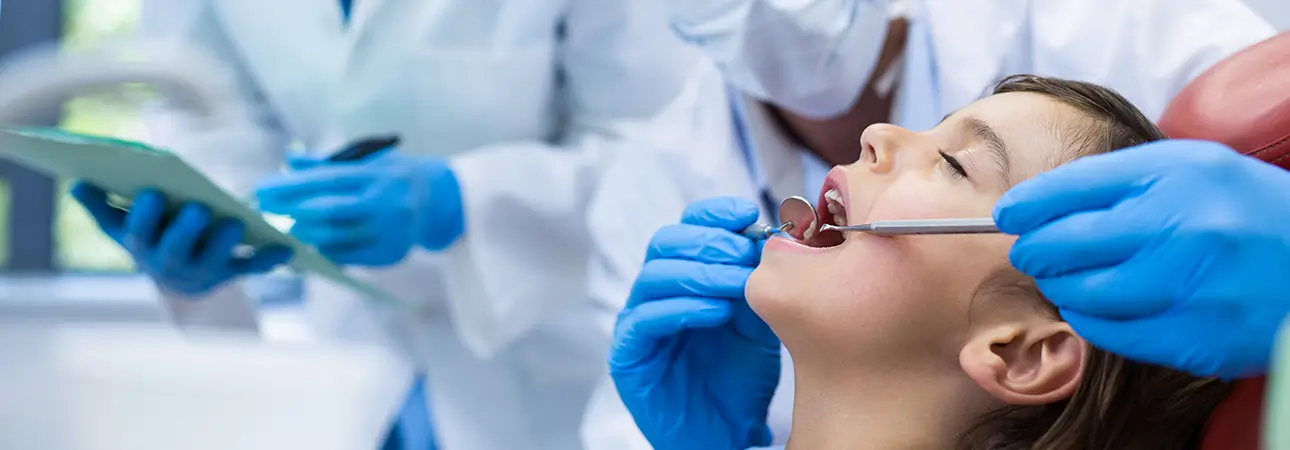Understanding Wisdom Teeth:
Formation and Purpose:
Wisdom teeth are the last molars growing at the mouth’s back. They generally grow between the ages of 17 and 25. In the past, these teeth were essential for our ancestors who had a rough diet. However, due to evolution and changes in dietary habits, many people no longer have sufficient space in their mouths for these additional molars.
Common Issues:
Although wisdom teeth serve a good purpose, they pose problems when they emerge. The common issues include impaction, crowding, misalignment and the potential for infection. These problems lead to pain, swelling, and complications with adjacent teeth.
Reasons for Wisdom Teeth Removal:
Preventing Dental Crowding:
Wisdom teeth are removed due to dental crowding. Sometimes, there is not enough space for these molars to emerge. As a result, they push against existing teeth and cause misalignment and crowding.
Avoiding Impaction:
Impacted wisdom teeth fail to emerge through the gum line, leading to entire complications. Impaction increases the risk of infection, cyst formation, and damage to neighbouring teeth or bone.
Resolving Pain and Discomfort:
Wisdom teeth push through the gums and cause pain and discomfort. Patients may feel this discomfort in the jaw and gums, often radiating to the ears. The wisdom tooth extraction is done to avoid this pain.
Preventing Gum Diseases and Tooth Decay:
Impaction can create pockets where bacteria accumulate, and the surrounding gum tissues can become swollen. This inflammation makes it difficult to clean the area, promoting harmful bacteria buildup resulting in gum diseases. These areas that are difficult to clean may also cause cavities to develop, resulting in tooth decay.
The Wisdom Teeth Removal Procedure:
Preparing for the Surgery:
Before the extraction, a thorough examination, including X-rays, is conducted to assess the positioning of the wisdom teeth and any potential complications. Our dentist in Langley will discuss the procedure, address concerns, and provide information on anesthesia options.

Anesthesia Options:
Depending on the complexity of the extraction or the patient’s preference, wisdom teeth removal is performed under local anesthesia, sedation, or general anesthesia. The chosen anesthesia option ensures a pain-free experience during the procedure.
Extraction Techniques:
The wisdom teeth extraction process depends on the tooth’s position and whether it has entirely emerged. Simple extraction involves loosening the tooth with forceps and removing it. In contrast, impacted teeth may require additional steps, such as cutting through the gum or bone.
Recovery and Aftercare:
Immediate Recovery:
Following the procedure, patients are monitored until the effects of the anesthesia wear off. It’s common to experience some bleeding, swelling, and mild discomfort immediately after wisdom teeth removal.
Managing Discomfort:
Pain management is crucial during the initial recovery period. Dentists often prescribe pain medication and provide guidelines on using cold packs to reduce swelling.
Dietary Restrictions:
Patients are asked to eat only soft foods and liquids during the first few days after oral surgery. Avoiding hard, crunchy, or spicy foods helps prevent irritation to the surgical site and promotes healing.
Avoid drinking liquids using a straw. Sucking through a straw delays healing by loosening necessary blog clots
Oral Hygiene:
Good oral hygiene must be practiced immediately to prevent infections. Dentists typically recommend gently rinsing with warm salt water and avoiding vigorous brushing near the surgical area.
Potential Complications and Follow-Up:
Infection:
While infection is a rare complication, it can occur. You are advised to watch for signs such as increased pain, swelling, or discharge and promptly call your dentists to report discomfort.
Dry Socket:
Patients must seek immediate dental care if a dry socket occurs after the surgery. A dry socket takes place when the blood clot in the extraction site dissolves quickly and causes severe pain
Follow-Up Appointments:
Our dental clinic in Langley will schedule follow-up appointments to monitor the healing process. These appointments will ensure necessary adjustments or interventions to ensure optimal recovery.
Wisdom Teeth Removal at Murrayville Dental Langley
Wisdom teeth removal is a common dental extraction designed to address potential complications and maintain oral health. Understanding the reasons for extraction, wisdom teeth removal procedures, and the importance of post-operative care can help patients relax and make an informed decision.
If you are facing discomfort and pain because of your wisdom teeth, consult our dentist in Langley to determine the right solution

